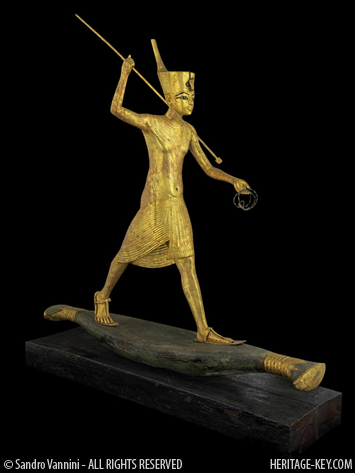A new exhibit that will look at forgery in ancient and modern art is going to be hitting the Royal Ontario Museum (ROM) this January.
The museum released details about it in a press release today. It’s called Fakes & Forgeries Yesterday and Today and it runs from January 9 to April 4, 2010.
There are going to be four sections that will examine the ancient world:
Egyptian Antiquities will examine why the west is so interested in Egypt and how this led to so many fake Egyptian antiquities being created. Among the examples is an authentic relief of the pharaoh Mentuhotep (ca. 2040-1963 BC). Other examples will be a fake of a pharaoh, a fake of the goddess Sakhmet and an authentic depiction of Neith (Late Period).
Mystery in Mexico takes a look at the Zapotec culture, which flourished in Mexico from 500 BC to modern times. In the early 20th century a flood of these artefacts came on the art market – some of which turned out to be fakes. The forgers were very sly. They used ancient techniques to create the knock-offs. Their techniques were so good that many museums bought them, including the ROM. The museum will display four (authentic) urns that date from 200 – 500 AD. They will also display two of these fakes.
Chinese Mysteries showcases fake and authentic examples of Ancient Chinese artefacts, including a Western Han mirror and a Han dynasty Jade. It will also explore a tricky question that occasionally faces curators. That is what to do about recent imitations of ancient art where it is not known if the intent is to deceive other people.
Women from Ancient Greece examines a type of Ancient Greece terracotta figurines known from the Greek town of Tanagra (which flourished from 330 to 200 BC). These Tanagra figures show “fashionable” women in relaxed poses. They were often buried with the dead. In 1871 many of these tombs were uncovered and before long several thousand of them ended up being looted. When it got harder to find these figurines they were mass produced as fakes.
The exhibit will also examine more modern fakes, such as how fraudsters fake mining claims, how fossils can be altered and how computer software is pirated (yes, Microsoft is one of the exhibit sponsors).
Also, just a few hours ago I interviewed exhibit curator Paul Denis.
We talked about a range of subject including:
-The emergence of ancient Greek coins as a new hot area for fraudsters.
-Why the internet is an awful place to acquire artefacts
-How curators (with a little scientific help) pick out fakes.
He also shared some interesting news – of the hundreds of Zapotec artefacts the museum has, about 50 percent (yes 50 percent) are forgeries. Paul Denis explained how the museum got duped on such a grand scale.




